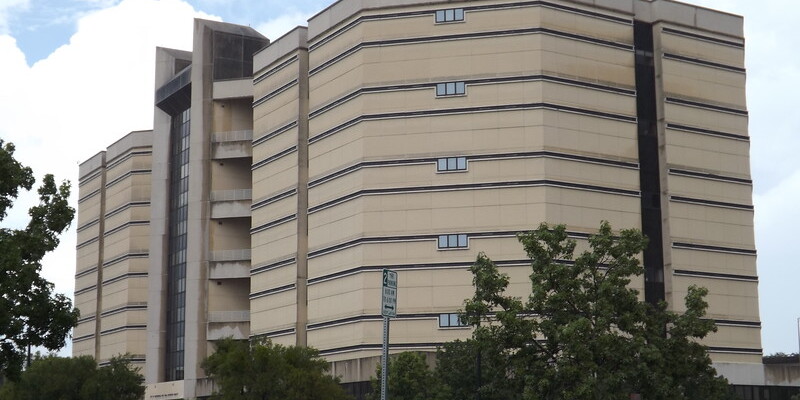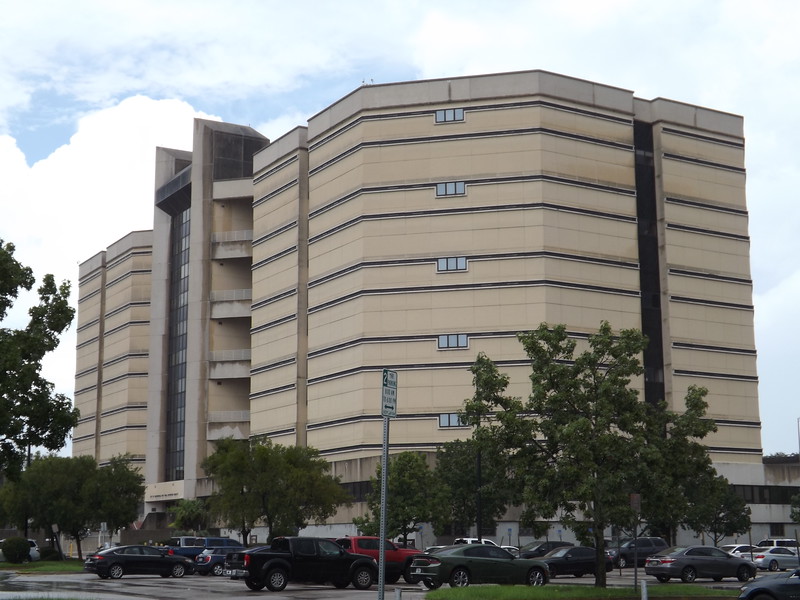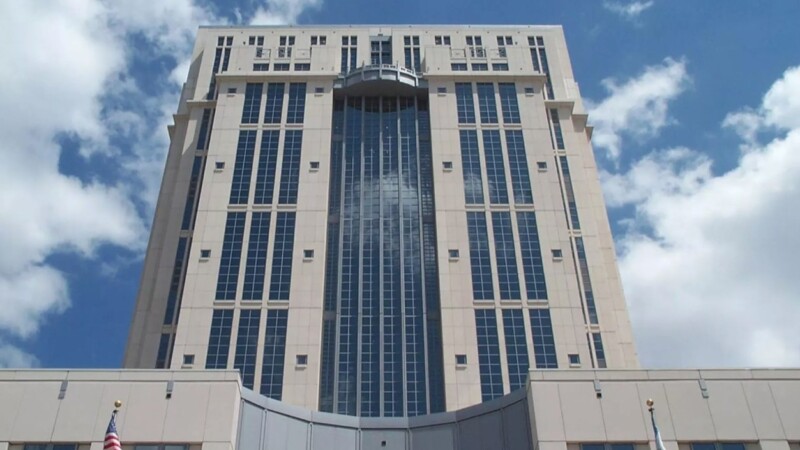
It’s often claimed that moving Jacksonville’s waterfront jail and police station is key to revitalizing Downtown. But is it true? A survey of cities with livelier downtowns than Jacksonville’s shows that while there are plenty of good reasons to explore new facilities, this expensive undertaking is highly unlikely to have the claimed effects on Downtown’s vibrancy.
Jacksonville’s jail

For a number of years now, some Downtown advocates have viewed Jacksonville’s jail, which overlooks the riverfront on Bay Street between the Northbank core and the Sports and Entertainment District, as an obstacle to revitalizing Downtown Jacksonville. In 2018, then-mayor Lenny Curry committed to relocating and demolishing the jail as part of his plans for remaking Downtown, and then-Chief Administrative Officer Brian Hughes said, “The long term strategy for a downtown with a vibrant corridor of work/live/play on Bay Street would be served by making this change.”
This year, City Council President Ron Salem announced that exploring moving the facility is one of his top priorities of his year-long term, although he gave the deteriorating condition of the current jail rather than Downtown development as the primary reason.
The issue of whether to move Jacksonville’s jail really comes down to two questions: Should the jail be moved because the current one is inadequate? And should the jail be moved because it’ll help revive Downtown?
The first question is up to JSO to determine, but most likely a new jail will eventually be needed, whether it’s 5 years or 10 or 20 down the road. We agree with Council member Salem that we should study the pros and cons now so we’re better equipped for the future.
The answer to the second question is far stickier. Conventional wisdom holds that the jail is bad for Downtown and takes up valuable space that could otherwise go to something else. But conventional wisdom on Downtown Jacksonville often has the problem of being completely wrong. Looking at the evidence both in Jacksonville and in other cities shows the issue is far more complex. Many cities with far more vibrant downtowns than Jacksonville have jails in even more high-profile places. And given that moving Duval’s jail has an estimated price tag of at least $244 million, not to mention the cost of whatever replaces it, we need to be sure it’ll work before committing taxpayer dollars. That kind of money spent on the smaller but more impactful things, such as clustering amenities, two-waying and prioritizing key streets and developing a vision for city-owned properties, could go a long way to make big improvements in a short time.
Additionally, moving the jail out of Downtown entirely could even have unexpected negative effects on the city center’s street-level activity. JSO’s Department of Corrections employs some 750 officers and civilian personnel. And if moving the jail also involves moving JSO’s headquarters, that could mean hundreds more officers and staff would leave Downtown.
Some may downplay (or even scoff at) the impact these officers and staff have on Downtown vibrancy, but they’ve been part of the fabric of the city core as long as Jacksonville has had a police department. This was particularly evident during the COVID-19 pandemic, when JSO staff were among the few still working Downtown. During that trying time, men and women in blue helped Downtown’s struggling restaurants and eateries survive.
The Jaxson’s Mike Field, also a Downtown business owner, knows this personally. “I would have had to face potential closure during the pandemic if it wasn’t for JSO, as there were very few workers Downtown for about a 5-6 month timeframe,” he says.
A look at other cities
Columbus, Ohio

In Downtown Columbus, Ohio, the Franklin County Jail was completed in 1969. In addition, the Franklin County Juvenile Detention Facility is located across the street from the jail. A part of the Franklin County Government Center, the entire complex is located on High Street, the main thoroughfare through the city and a short two-block walk from the pristine Scioto River trail and park system. Today, the 53-year-old jail is in the process of being replaced by a new $360 million corrections center located outside of the downtown core. However, the benefits of the new jail aren’t being touted as a need to make Downtown Columbus vibrant. That’s because the Downtown is already vibrant and has been so for quite awhile. The benefits being promoted focus on prisoner safety and rehabilitation.





Fort Lauderdale, Florida

The Broward Sheriff’s Office manages four jail facilities in Broward County. The Main Jail is an eight-story maximum-security facility adjacent to the Broward County Courthouse and the New River in Downtown Fort Lauderdale. Built in 1985, the jail was expanded in 1992 to house 1,538 inmates. Despite the jail’s prominent location in the heart of downtown and along the New River, Fort Lauderdale’s central business district is one of Florida’s most popular. According to the Fort Lauderdale Downtown Development Authority, more than 50 developments are in the pipeline, some already underway, bringing more than 8,500 new residential units — and 725,800 square feet of new restaurant and retail space.



Minneapolis, Minnesota

In Minneapolis, the 499,000-square-foot Hennepin County Public Safety Facility houses inmate cells, a booking facility sized to accommodate 80,000 bookings per year, three arraignment courtrooms, pretrial court support, public defender’s spaces and sheriff’s department administration and training. The building is designed to accommodate vertical expansion of an additional nine stores.
In addition, the facility was designed to work in concert with the Adult Detention Center, which is housed across the street in City Hall. Despite its Downtown Minneapolis address, the immediate area surrounding the complex is more vibrant on its worst day than Downtown Jacksonville will be in 10 years when the Four Seasons, Riverfront Plaza and the new EverBank Field are all done.



Conclusion: distinguish real needs from folk wisdom
We certainly agree with Council President Salem, JSO’s brass and others that we should explore moving the jail on its own merits. It’s a matter of when, not if, Jacksonville will need a new jail, and we should be as prepared for that as possible. We need to take into consideration the size and condition of the current jail as well as the cost, location and other logistical factors and come up with a workable timeline for replacement.
However, it’s best to take the claims of revitalizing Downtown out of the discussion entirely. As the above cities show, it’s possible to create a much more active and vibrant Downtown even with a Downtown jail, and even with one that’s far more centrally located than Jacksonville’s. A $244 million-plus jail move just won’t have the same level of positive impact on Downtown Jacksonville compared to other investments that could get a much greater bang for the buck for much less money. And in fact, as moving the jail means losing at least 750 people who are currently helping Downtown businesses stay afloat, we should keep all options open with the jail’s future, including leaving it in Downtown if that’s the most logical result of the jail replacement study.
There are a great many things Jacksonville can do to finally fix what’s ailing Downtown, and we ought to focus on those rather than chasing another expensive fantasy cure.








